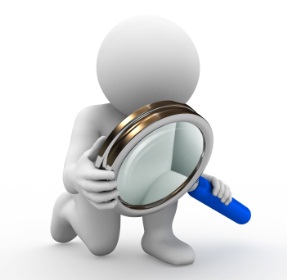What is the first step on any physical exam?
Observation/Inspection!

What is the first component of the Neuro Exam?
Mental Status:
Level of Consciousness
Orientation (person, place and time)
Language (fluency, comprehension, repetition) Articulation (dysarthria)
What unique aspect are we testing for in Neuro-Motor Exam?
Strength
What is normal reflex score?
2
Reflexes are graded on a 0-to-4 scale,
0 being "no response", 2 being "normal response", 3 being "hyperactive but considered normal".
A 4-plus response is hyperactive and may indicate disease.
There is often clonus associated with a reflex graded a 4.
How long does a TIA usually last for?
Less than 60 minutes
Classical definition: up to 24 hrs.
What unique function is assessed in the MSK exam?
Range of Motion (Active or Passive)
What is best to imaging test to out intra-cranial hemorrhage?
Non-contrast CT of the head.
What are small, rapid, involuntary contractions in skeletal muscles that are too weak to move a limb?
Fasciculations
How do we test Graphesthesia?
Graphesthesia is writing numbers in the patient's hand and asking them to identify them.
How do we test Streognosis
In the lower extremities, which specific joint areas are assessed (4)?
Joints of Hips, Knees, Ankle and Foot.
What are two neuro-cerebellar tests for upper extremities?
1. finger to nose
2. rapid alternating movements.
Which reflexes are asessed in the lower extremities?
1. Patellar tendon reflex
2. Achilles tendon reflex
3. Babinski reflex (Plantar response)
What would you observe in the affected eye with a Relative Afferent Pupillary Defect (Marcus-Gunn Pupil) during a swinging light test?
Affected eye won't constrict and appears dilated.
What is the time frame for administering tPA?
Within 4.5 hours of symptoms or last normal interaction.
In the upper extremities, which specific joint areas are assessed (5) ?
Spine (cervical, lumbar), Shoulder, Elbow, Wrist, and Hand
How do we test for CN XI?
Shrug against resistance and neck left and right against resistance.
You see a 63 YO patient and assessed her neuro-motor function. You notice that when you tested her triceps muscle, the right arm had active movement against gravity and some resistance, but not full.
Rate the neuro-motor strength.
Rating: 4/5
Motor strength should be graded on a 0-to-5 scale:
0 no response
1 contraction of the muscle
2 active movement of the body part with elimination of gravity/
patient lying in bed moving their arm in the plane of the bed
3 active movement against gravity but not against resistance
4 active movement against gravity and some resistance
5 active movement against full resistance without obvious fatigue
Locate the stroke lesion:
Contralateral weakness and sensory loss in the lower limbs more marked than in upper limbs.
ACA most likely.
What is the inability to perform rapid alternating movements?
Dysdiadochokinesia
13 YO presents for a school physical. Upon inspection, you notice that one shoulder is higher than the other.
What do you suspect?
Scoliosis.
Bonus: What's the next step?
How is CN V tested?
Test both motor function and sensory function.
There are three divisions to the sensory function: the ophthalmic, maxillary, and mandibular divisions.
Test for sensation on both sides. Test temporalis and masseter muscles.
Corneal reflex is deferred in ICM.
Facial movements:
Ask the patient to raise their eyebrows, wrinkle their forehead, close their eyes tightly, smile and puff up their cheeks.
Note symmetry of these movements.
Locate the stroke lesion:
Contralateral weakness
Sensory loss more marked in the upper limbs and lower half of the face than in lower limbs
MCA most likely
45 YO woman presents with recent 20 lb weight gain in the last 2 months, and feeling "cold all the time." Her reflexes are +1 in the Upper and Lower extremities.
What is her most likely diagnosis?
Hypothrydorism